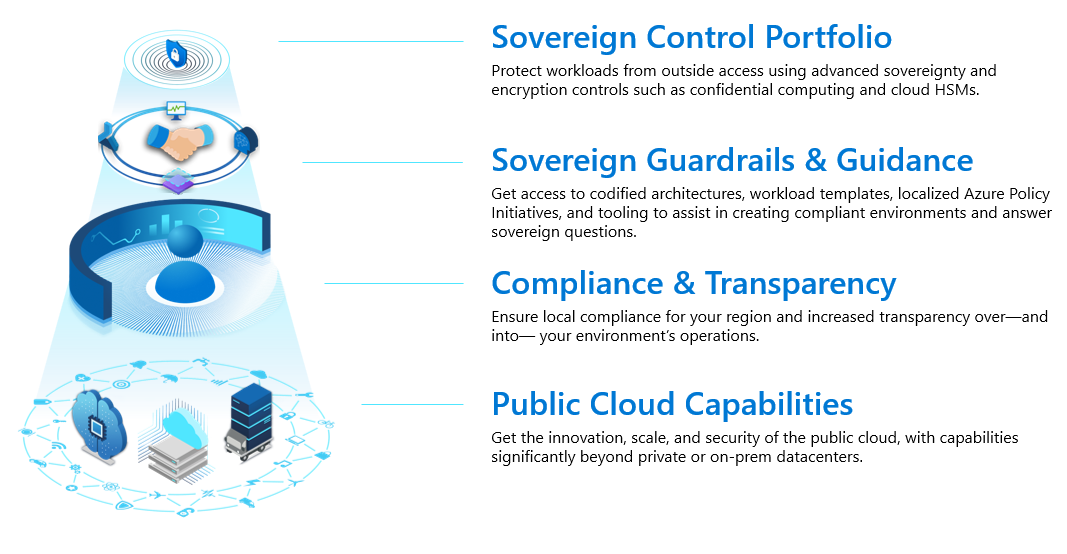Cloud Sovereignty: What It Means for Global Businesses
 Bridge Group Solutions
Bridge Group Solutions
Overview
As global enterprises migrate more data and operations to the cloud, the concept of cloud sovereignty has taken center stage. No longer just a technical issue, cloud sovereignty blends legal, political, and compliance considerations—forcing companies to rethink where and how their data is stored and processed.
In 2025, with evolving regulations, geopolitical tensions, and rising consumer demands for data protection, cloud sovereignty is more than a buzzword. It’s a strategic necessity. This blog explores what cloud sovereignty means, why it matters for global businesses, and how to approach it in today’s digital environment.
What Is Cloud Sovereignty?
Cloud sovereignty refers to the ability of an organization—or a government—to ensure that data stored in the cloud is subject to the laws and governance of a specific country or region. It goes beyond basic data residency, addressing:
Who owns and controls the data
Where data is stored and processed
Which jurisdiction applies to cloud services
Who has access to the infrastructure and data
This is especially relevant for multinational companies navigating international privacy regulations, like the EU’s GDPR, China’s PIPL, or India’s DPDP Act.
Why Cloud Sovereignty Matters in 2025
1. Increasing Regulatory Complexity
Data protection regulations are becoming stricter and more fragmented around the world. Businesses operating across borders must comply with diverse local laws. Failure to do so can result in legal penalties, customer distrust, and data access restrictions.
For example:
The European Union enforces GDPR, which restricts data transfer outside the EU unless adequate protections are in place.
Countries like France and Germany now encourage using sovereign cloud providers that are immune to foreign surveillance laws.
Cloud sovereignty helps businesses remain compliant without sacrificing the advantages of cloud computing.
With cloud sovereignty, companies can control their encryption keys, monitor data access, and ensure that data is stored within trusted borders. Solutions from providers like Kenoxis Technologies help fortify infrastructure against unauthorized access and foreign surveillance.
2. Data Security and Trust
As cyber threats increase and geopolitical tensions rise, organizations are prioritizing digital trust. Customers and governments want assurance that sensitive data is protected from unauthorized access—not just from hackers, but from foreign authorities.
With cloud sovereignty, companies can control their encryption keys, monitor data access, and ensure that data is stored within trusted borders. This helps protect intellectual property, trade secrets, and personal information.
3. Cloud Provider Accountability
One challenge with public cloud services is dependency on large global vendors like AWS, Microsoft Azure, and Google Cloud. While these platforms offer scale and reliability, concerns exist about who controls the infrastructure and whether foreign governments can compel access under laws like the U.S. CLOUD Act.
To address this, some providers now offer “sovereign cloud” options or partnerships with local entities, ensuring that operations, data management, and compliance are handled within a specific jurisdiction.

Key Principles of Cloud Sovereignty
To implement cloud sovereignty effectively, organizations should follow these core principles:
Data Localization
Ensure data is stored and processed within national or regional borders, in compliance with local regulations.
Operational Autonomy
Use cloud providers or configurations that allow local control over service delivery, monitoring, and maintenance.
Legal Jurisdiction
Choose cloud services that are governed by local laws and are not subject to foreign government intervention.
Encryption and Key Management
Retain control over encryption keys, using sovereign key management systems when possible.
Auditability and Transparency
Maintain full visibility into where data resides and who has access, with detailed audit logs and policy enforcement.
How Global Businesses Can Prepare
1. Assess Your Data Landscape
Start by identifying what data you have, where it resides, and which regulatory requirements apply. Categorize data based on sensitivity and jurisdictional impact.
2. Work with Sovereign Cloud Providers
Cloud giants are adapting by forming partnerships or creating region-specific offerings. For instance:
Evaluate providers that align with your compliance needs while maintaining scalability and innovation.
3. Implement Multi-Cloud or Hybrid Cloud Models
Using multi-cloud providers or a mix of on-premise and cloud systems helps diversify risk and gives you greater control over compliance. It also prevents vendor lock-in and allows for regional data strategies.
Using multi-cloud providers or a mix of on-premise and cloud systems helps diversify risk and gives you greater control over compliance. Bridge Group Solutions supports businesses in building secure, scalable hybrid cloud infrastructures tailored for sovereignty requirements
4. Strengthen Data Governance Policies
Cloud sovereignty depends on robust internal policies. Implement:
Role-based access controls
Secure key management
Incident response plans
Regular compliance audits
Ensure all stakeholders, from IT to legal, are aligned on sovereignty objectives.
5. Stay Updated on Global Laws
Cloud compliance isn’t a one-time event. Laws continue to evolve, and staying informed is key. Work with legal advisors and compliance officers to monitor regulatory shifts in every country where you operate.
Laws continue to evolve, and staying informed is key. Platforms like The Capital Box offer insights into regulatory shifts and compliance trends across regions, helping enterprises make proactive decisions
Conclusion
Cloud sovereignty is reshaping the way global businesses think about digital infrastructure. In 2025, ensuring that your data is compliant, secure, and controlled within the proper jurisdiction is essential—not just for regulatory reasons, but for customer trust and competitive advantage.
By understanding cloud sovereignty and adapting your cloud strategy accordingly, your business can unlock the full potential of the cloud while remaining secure, resilient, and compliant in a global marketplace.
Subscribe to my newsletter
Read articles from Bridge Group Solutions directly inside your inbox. Subscribe to the newsletter, and don't miss out.
Written by

Bridge Group Solutions
Bridge Group Solutions
Bridge Group Solutions delivers expert IT outsourcing services, helping businesses accelerate software development with cutting-edge technology and skilled teams. We specialize in integrating AI-driven tools and agile workflows to boost productivity and innovation.